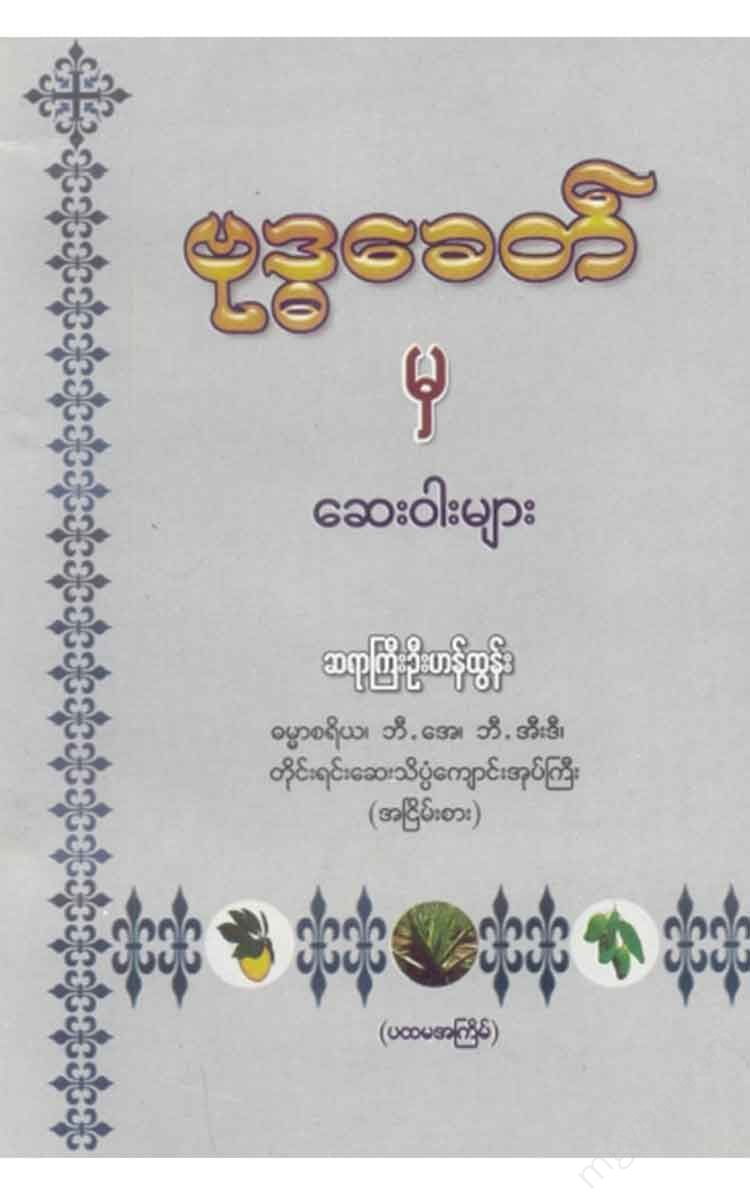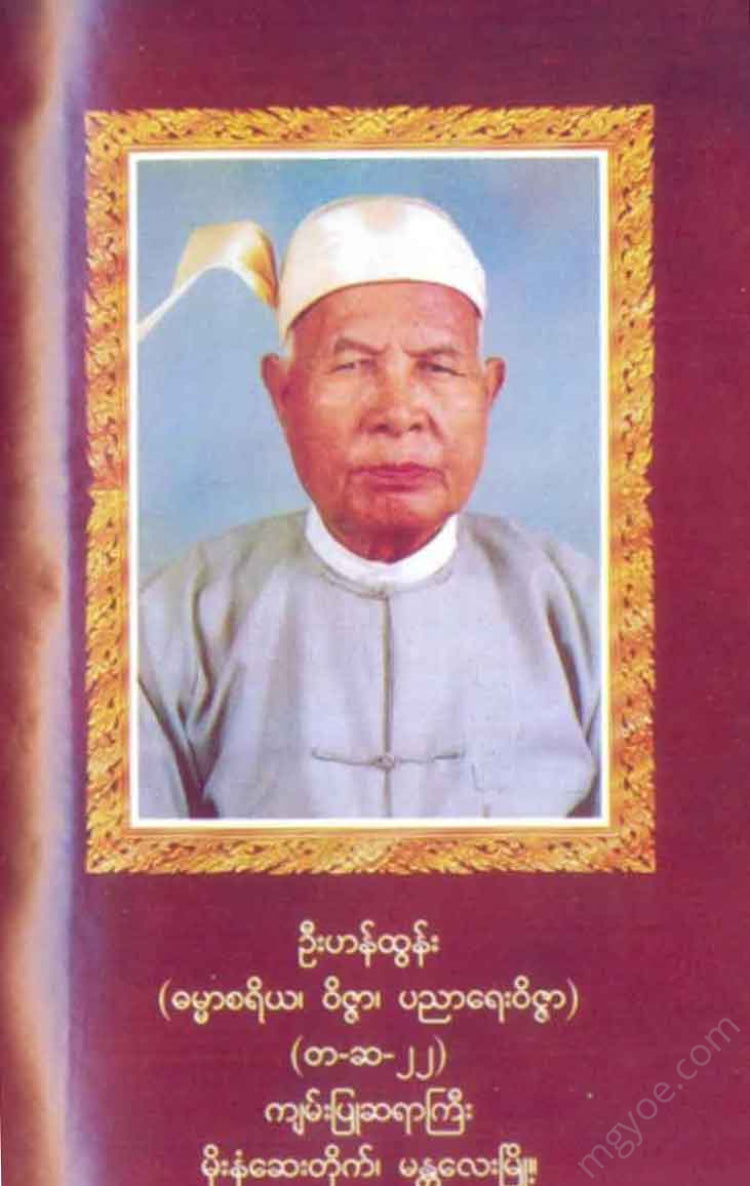Other Websites
Master U Han Tun - Medicines from the Buddhist Era
Master U Han Tun - Medicines from the Buddhist Era
Couldn't load pickup availability
Introduction Ayurveda is a medical science that emerged in the central regions of India many years before the birth of Gautama Buddha and is clearly established through solid medical texts.
As the saying goes, “In medicine, there is a cure, and in surgery, there is a cure.” The Sarkasaya, which describes the treatment of various diseases, and the Susattasaya, which describes the physical aspects and surgical techniques, are the most prominent medical texts among the Ayurvedic medical texts.
More than two thousand years ago, as the saying goes, "Dwe Attha, Eka Eka, Yika Kaja, Ropa Sasana Year, Sakrakaz", counting backwards from the current year 1366, before the Sasana Year 2548, when the Buddha was alive, among the disciples who came from all over the world to learn Ayurvedic medicine from the medical professors at the university, was Sayara Lay Jiva from Rajagaha.
Saya Lay Jivaka studied for seven years with great intelligence and great diligence. The professor, who was well-versed in medicine, sent him to find a medicinal plant within eight miles of the city that was not poisonous.
Satisfied, he gave them only a small amount of food and allowed them to return home.
When Saya Jivaka arrived in Thaketa, he began to work as a medical doctor to supplement the food supply. He cured the headache of a wealthy man who had been suffering from it for seven years with a nasal spray made from buttermilk, called Natthukamma, and administered the medicine into his nose once.
The son of a wealthy man from Varanasi was cured of his intestinal disease by turning over his abdomen, loosening the intestinal contents, and putting them back into the abdomen.
Once upon a time, a wealthy man from Rajagaha had a headache that had lasted for seven years, but when he was treated by famous doctors, he did not get better. One doctor said that he would only live for five days, and another said that he would only live for seven days. In treating that headache, Saya Jivaka opened his skull and removed a large worm that would eat the brain in five days and a small worm that would eat the brain in seven days, and then he healed the patient as normal.
He underwent surgery to completely heal within twenty-one days.
Once, while treating the disease of King Panduta of the country of Uni, the king used butter, which he did not like, to give it the smell of butter.
It is mixed with other medicines to prevent the butter color and butter taste. When taken with food
Knowing in advance that the king would be angry if he found out about the butter, he quickly returned to Rajagaha on the king's fast horse.
When the king of Pazheta smelled buttermilk when he was about to enter the palace, he was very angry. However, because of that medicine, his leprosy was completely cured. He was very grateful and sent some valuable silks to Sayara Jivaka.
“Furthermore, at one time, the Buddha was suffering from a great deal of wind, bile, phlegm, and anger in his body, and he wanted to have his bowels emptied. The venerable Jivaka offered him three lotus flowers, which were soaked in a medicine that soothed the bowels. He also said that if he kissed one lotus flower, his bowels would be relieved.
However, the Buddha knew that he would think on his way home that he would take the bath water after taking the three lotus flowers and then go home. So after taking the bath water mixed with hot water, he took the bath water twenty-nine times. Then he took the bath once.
The medical skill of the great sage Jivaka, who could administer medicines to soothe the stomach by simply smelling the scent of the lotus flower, was so amazing that it was recorded in the Jivaka Sutta. Note: The three-lobed “Setakki” plant that grows in the Himalayas is called
According to the Ayurvedic medical text, the smell of the hibiscus plant can cause diarrhea, and the lotus flower offered by the sage Jiva was infused with powerful medicinal ingredients like the hibiscus plant.
It should be assumed that Jivaka, who was so skilled in medicine, was also responsible for the health of his lord, King Bhima, and the monks led by the Buddha.
When the Buddha and his disciples fell ill, he would use the medicines used by the great physicians such as Jivaka, and he would use the medicines that were easily available and could cure the disease.
For example, seeing some monks suffering from dysentery and unable to eat or drink, he prescribed the fifth medicine, such as buttermilk, and water with cow urine.
| Making him drink the juice of soaked bitter gourd, etc.
If the medicines prescribed by the Buddha were to be extracted from the Bodhisattva Pitaka and the Atthakathika, the opening texts, and written in a way that is understandable to the general public, it would be of great benefit to future generations who are unable to read and study the Pali scriptures. It would also help to prevent the good practices of that era from gradually disappearing, as many people no longer know them. About five years ago, I myself composed a compilation of the medicines from the Buddha's era. Now, I realized that it would be of great benefit if those Niyama Lankas were to be written in detail and published so that everyone who reads them can understand them, and so I have compiled this book under the name "Medicines from the Buddha's Era" or "Medicines Prescribed by the Buddha."
(Hanu Tun) S-A Dhamma Sariya
BA, B.Ed., Director of the School of Traditional Medicine (retired)
(2) Moe Nam Pharmacy, Mandalay



